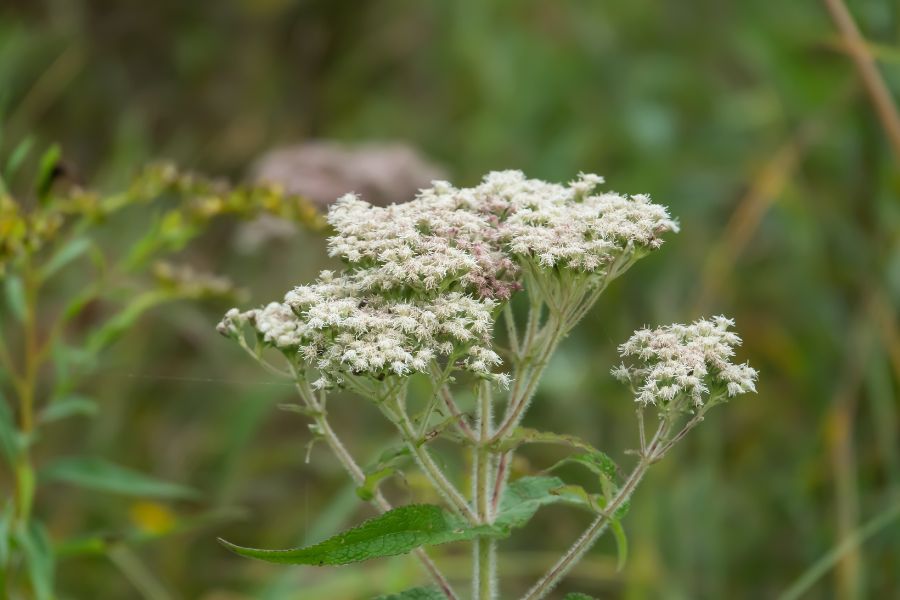Introducing wild foods into your diet is not always easy. One of the best places to start is with wild greens and herbs because many of these foods can be mixed directly into more recognizable foods like basic salads.
If your inner herbalist is yearning to turn nature’s bounty into medicine, then greens and herbs are an awesome starting point. We have several wild edible plants that pack a punch when they are used in tincture and tea forms.
Many of these plants are so common that you have walked by them without thinking about them. You might have even picked many of them at one time or another.
A Quick Reminder
Before we get into the specifics about where and how to find these plants and mushrooms, we want to be clear that before ingesting any wild plant or mushroom, it should be identified with 100% certainty as edible by someone qualified and experienced in mushroom and plant identification, such as a professional mycologist or an expert forager. Misidentification can lead to serious illness or death.
All plants and mushrooms have the potential to cause severe adverse reactions in certain individuals, even death. If you are consuming wild foragables, it is crucial to cook them thoroughly and properly and only eat a small portion to test for personal tolerance. Some people may have allergies or sensitivities to specific mushrooms and plants, even if they are considered safe for others.
The information provided in this article is for general informational and educational purposes only. Foraging involves inherent risks.
Wood Sorrel

This is one of those plants that will blow you away when you finally taste it. You have seen it your whole life. You have been walking by patches of wood sorrel forever. You could never imagine how tangy and tasty this little plant can be.
I particularly enjoy the tiny seed pods as they are very tart. They are about a quarter of an inch but have a delightful little crunch.
Wood sorrel looks a lot like red clover. The shape of the leaves is the same, but they are much smaller. The taste is a dead giveaway. Look for wood sorrel in fields and even front and backyards.
This plant is much more of a flavor enhancer in things like salads. It adds a refreshing tang but would not be a substantial plant to eat on its own.
Nettle

Stinging nettle is the most nutritious green on the planet. It is so filled with nutrients, in fact, that people drink the liquid from cooking nettle as a multivitamin.
I spent most of my young life trying to avoid the stuff because if you touch it with bare skin, it itches and burns for 7 to 10 minutes. The idea of eating something so mean never crossed my mind at that age.
We were in and out of southeastern Pennsylvania rivers when I was a kid. My father would take me fishing all summer long and we’d wade the waters in shorts. Every so often you’d feel that fire on your skin and know you had touched some nettle.
The small stinging trichomes that cover the plant make it easy to identify. Stinging nettle sticks close to creeks and riverbanks. It grows on a fibrous stem and has leaves that grow opposite one another up the stem.
The leaves are sharply toothed almost like a saw blade, as though they want to warn you that if you touch it’s gonna hurt. Make sure you bring along some gloves!
Yarrow

Yarrow is nicknamed the “battlefield herb,” but you wouldn’t know it just by looking at it. I always thought that yarrow would be great tucked into a bouquet of flowers. It has delicate fern-like branches that grow off the main stem.
The flowers bunch at the top of the plant and are made up of small delicate white petals with yellow at the center. The flowers will help you see yarrow from afar but the fernlike stems will give you a positive ID.
Yarrow is best known for its ability to stop bleeding, and this can be done by creating and applying a poultice, or crushed and mashed yarrow leaves and flowers, to a bleeding wound. As long as it’s nothing severe the bleeding will stop very quickly.
Mullein

A furry herb that is easy to find and highly adaptable, mullein is perfect for our list of easy-to-identify herbs. The only thing you might mistake it for is lamb’s ear. The big difference is lamb’s ear leaves are smaller, and they grow on a stem.
Mullein leaves are longer and grow on the ground in a basal rosette rather than up a stem.
The fuzzy lanceolate leaves are an easy tell when trying to identify the plant. They can be harvested throughout their life cycle. This plant will also put up tall stalks with lots of small yellow flowers on them.
Some people swear by smoking dried mullein for chest colds. You can get better outcomes by making a simple tea using the shredded leaves. Steep 2 oz of dried mullein leaves into 1 ½ cups of boiling water for 3 minutes. You can add mint and honey before straining.
Wild Violet

By late spring, early summer, the fields and yards around you are speckled with beauty. It’s the golden tubular flowers of dandelion, it’s the young white flowers of chickweed, and of course the beautiful purple of the wild violet.
The first part of the plant to emerge will be the heart-shaped leaves. These are some of the things that make violets so beautiful aside from the flowers themselves. It’s a special detail. The leaves and the flowers are edible.
It’s best not to eat the plant till the flowers bloom because other plants have heart-shaped leaves. Once you see the five-petaled flowers appear there is no mistaking them.
Wild violet leaves and flowers are great tossed into salads. They are very delicate in flavor. Violet also has medicinal properties, too. All the above-ground parts of the plant can be used in a tea that acts as an expectorant.
Goldenrod

Maybe the easiest plant to identify on the list, goldenrod, is another medicinal that makes a great tea. After gathering several heads of goldenrod at a Prepper event in North Carolina, my buddy’s wife took them back home for medicinal use.
In about a week, he was suffering from a fall head cold and his wife’s goldenrod tea offered tremendous decongestion and had him feeling much better.
Goldenrod is a very easy plant to identify as it puts off an absolute bounty of small yellow flowers. These clusters appear on various stems of the plant which grow between 2 to 7 feet tall.
Fields, thickets, meadows, and places that get heavy sun are where you will find goldenrod. Take the entire plant and dry the beautiful heads of flowers for healing teas or tinctures.
Boneset

This North American healing plant loves to grow near a water source. It doesn’t carry a ton of distinct features but if you set out to forage it, it should be easy to identify. It is a plant best to ID in the fall as it puts off a cluster of small flowers.
I always look at the leaves because they are lance-shaped, opposite, and wrap around the stem of the plant. When I see that feature and the white flowers atop the plant, I know it’s boneset.
This plant is a powerful medicinal that helps with fever, infection, inflammation, and pain. Usually taken as a tea, it even has some decongestive properties. Boneset is one of the most unassuming healing herbs out there.
Pine Needle

There are a lot of wild greens and herbs on this list that you might identify for the first time. None are as familiar as a pine tree. I mean, we bring whole trees into our homes during Christmas.
Did you know that one cup of pine needle tea contains 250 mg of Vitamin C? In case you were wondering, that is the equivalent of 2 cups of orange juice. The difference is that you don’t have the added sugar with pine needle tea.
I forage eastern white pine for my pine needle tea. However, red pine and black pine are two great options.
Self Heal

When foraging healing plants, I always find it interesting that the majority of them have at least some form of lance-shaped leaves. Not sure if that is a coincidence or if it has something to do with the properties that make up a plant.
Self heal is another plant with lance-like leaves and clustering flowers atop it. In the case of self heal you will have clusters of small tubular purple flowers.
This plant is a Native American medicine that enjoys growing in gardens, fields, grasslands, and even lawns. Keep your eyes peeled for those tiny purple flowers from May to October.
Creeping Charlie

My garden beds get completely covered in creeping charlie every year. It’s basically a crop that grows on its own year after year. If you find this wild edible you are going to find a lot of it. This is not a solitary plant but one that, like chickweed, can develop mats of plants.
Creeping charlie was such an effective healing herb that it was brought to North America by the Europeans. It has long been used to treat all things cough-related, from congestion to tuberculosis.
The stem, leaves, and flowers are all edible. Just make sure you give them a good wash as this is a low-vining plant so it can be very dirty.
Look for an area dominated by low-growing plants with opposite scalloped leaves and blue flowers. The only dangerous lookalike to worry about is henbit.
Creeping charlie might be in your garden bed right now!
One Final Disclaimer
The information provided in this article is for general informational and educational purposes only. Foraging for wild plants and mushrooms involves inherent risks. Some wild plants and mushrooms are toxic and can be easily mistaken for edible varieties.
Before ingesting anything, it should be identified with 100% certainty as edible by someone qualified and experienced in mushroom and plant identification, such as a professional mycologist or an expert forager. Misidentification can lead to serious illness or death.
All mushrooms and plants have the potential to cause severe adverse reactions in certain individuals, even death. If you are consuming foraged items, it is crucial to cook them thoroughly and properly and only eat a small portion to test for personal tolerance. Some people may have allergies or sensitivities to specific mushrooms and plants, even if they are considered safe for others.
Foraged items should always be fully cooked with proper instructions to ensure they are safe to eat. Many wild mushrooms and plants contain toxins and compounds that can be harmful if ingested.


